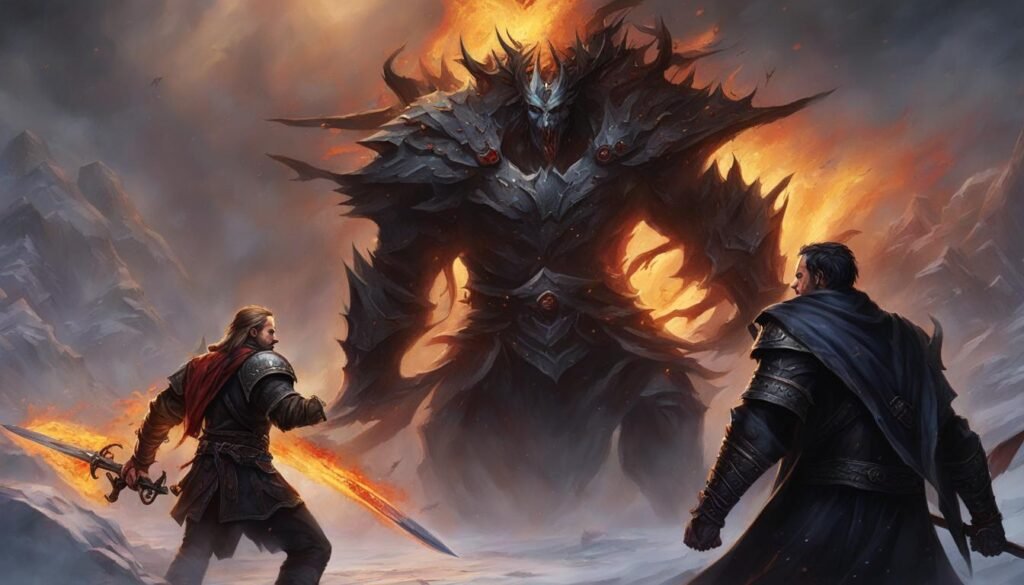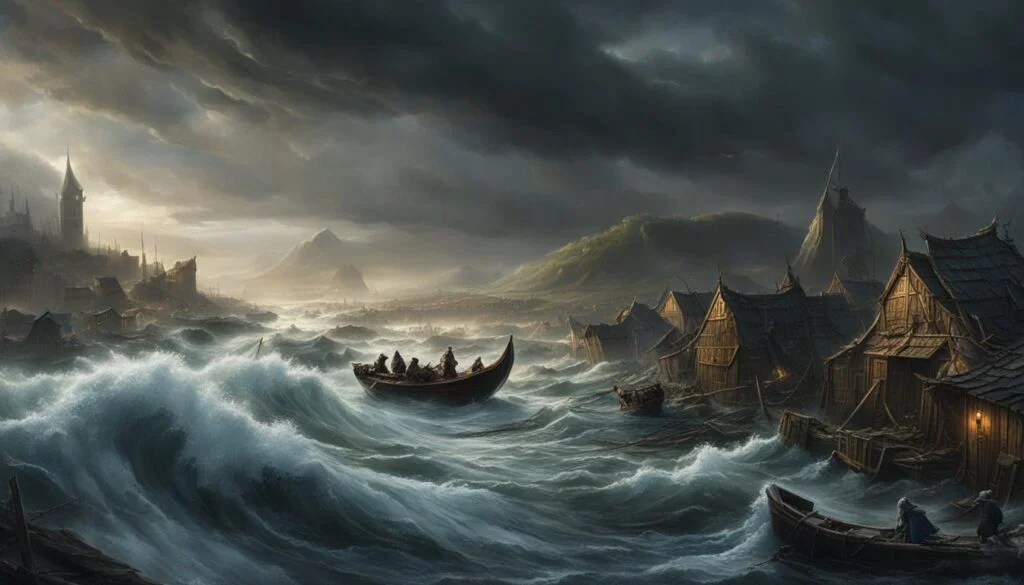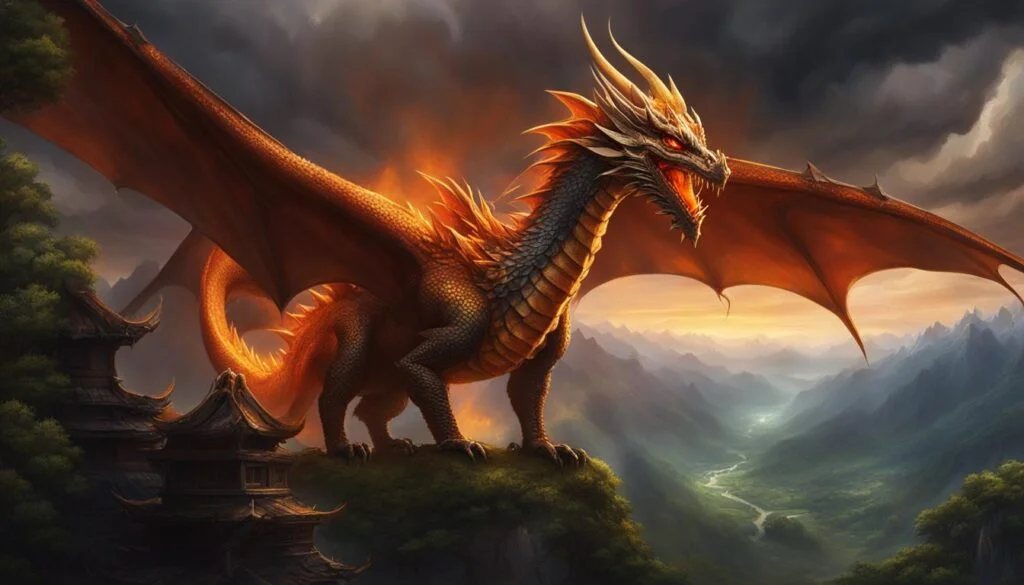Welcome to an exploration of the tragic tale of Baldur, a beloved figure in Norse mythology. In this article, we will delve into the fascinating world of Norse gods and the events that led to Baldur’s untimely demise. From his unparalleled beauty and invulnerability to the machinations of the mischievous trickster god Loki, we will uncover the path that ultimately brought about his tragic fate.
Key Takeaways
- Baldur, a prominent figure in Norse mythology, met a tragic end.
- He was known for his beauty, joyfulness, and invulnerability.
- Loki, the mischievous trickster god, played a pivotal role in Baldur’s demise.
- The story of Baldur continues to resonate in cultural and literary works.
- It serves as a cautionary tale about unchecked ambition and the inevitability of fate.
Introduction to Baldur and Norse Mythology
Baldur, a revered figure in Norse mythology, held a special place among the gods. Known for his beauty, invulnerability, and role as the god of light, joy, and purity, Baldur was the son of Odin and Frigg. Understanding the intricate world of Norse mythology is essential to grasp the tragedy that befell Baldur.
Key Figures in Norse Mythology
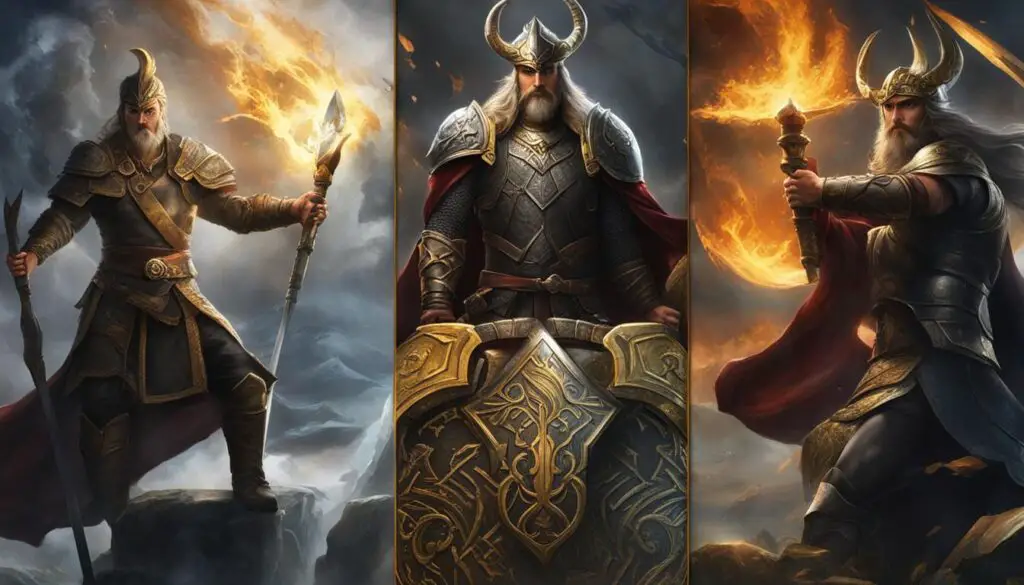
In Norse mythology, Baldur, the beloved god of light and purity, crossed paths with several key figures whose actions ultimately led to his tragic fate. These influential figures include:
- Odin: The chief of the gods and the father of Baldur, Odin played a significant role in shaping the destiny of his son. His wisdom and knowledge extended throughout the nine realms, making him a revered and respected figure in Norse mythology.
- Thor: Known as the god of thunder, Thor possessed immense strength and was a close ally of Baldur. While he fought valiantly to protect the gods and mortals, his actions unknowingly contributed to the events that unfolded and led to Baldur’s tragic demise.
- Loki: Often depicted as a cunning and deceitful trickster, Loki’s envy and jealousy towards Baldur played a pivotal role in the unfolding tragedy. Loki exploited Baldur’s vulnerability to orchestrate his downfall, forever altering the course of Norse mythology.
- Freyja: As the goddess of love, fertility, and magic, Freyja’s involvement in Baldur’s story adds depth and complexity. Her powers and knowledge influenced the events leading to his fate, highlighting the intricate web of relationships within Norse mythology.
The interactions and dynamics among these key figures shaped the narrative of Baldur’s tragic tale. Their individual motivations, choices, and actions intertwined to create a story rife with consequences and emotional turmoil. Understanding the roles played by Odin, Thor, Loki, and Freyja is essential in unraveling the full impact of Baldur’s fate within the rich tapestry of Norse mythology.
Baldur’s Unparalleled Beauty and Invulnerability
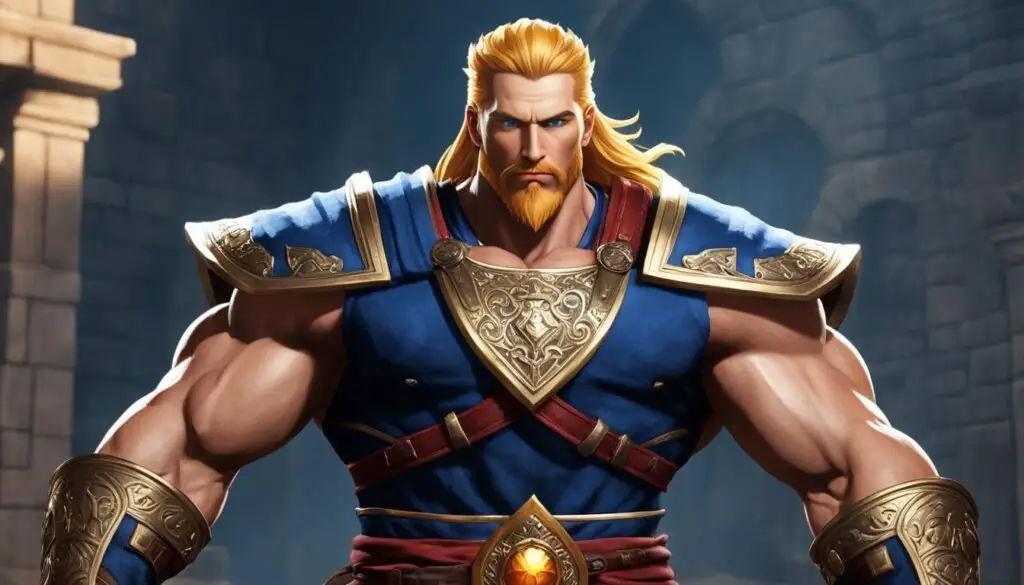
Baldur, the Norse god, possessed both unparalleled beauty and invulnerability, making him a revered figure among mortals and deities. He was known as the most handsome of all the gods, captivating everyone who beheld him with his radiant presence. His flawlessness, both in appearance and character, made him a symbol of purity and perfection in Norse mythology.
This divine attribute of invulnerability stemmed from the protective oaths made by his mother, Frigg. Through her powerful enchantments, Baldur became impervious to harm, rendering him virtually indestructible. These binding oaths safeguarded him from any form of injury or attack, elevating his status to that of an invincible warrior.
Within the intricate tapestry of Norse mythology, Baldur’s invulnerability stood as a testament to his divine nature and the favor bestowed upon him by the gods. His imperviousness to harm set him apart from his fellow deities, cementing his reputation as a formidable force in battles and a beacon of hope for all who sought protection.
The Beauty of Baldur
Baldur’s physical beauty surpassed that of any other Norse god or mortal. His features were likened to that of a radiant sun, illuminating the world with his sheer loveliness. Mortals and gods alike were captivated by his enchanting presence, falling under the spell of his awe-inspiring beauty. It was said that gazing upon Baldur was akin to beholding the majesty of the heavens themselves.
Invulnerability: The Divine Shield
Baldur’s invulnerability encompassed a divine shield that deflected all potential harm. His imperviousness extended to both physical and magical attacks, rendering him impenetrable to any force that dared challenge him. This rare quality made Baldur an invaluable asset to the Norse pantheon, as his immortality acted as a bulwark against any threat that loomed over them.
As the gods and mortals marveled at the extraordinary beauty and invulnerability of Baldur, little did they know that his tragic fate was destined to shatter their euphoria. The next section will delve deeper into Baldur’s tragic end, exploring the events that led to the demise of this beloved Norse god.
Baldur’s Tragic End: How the Beloved God Met His Fate
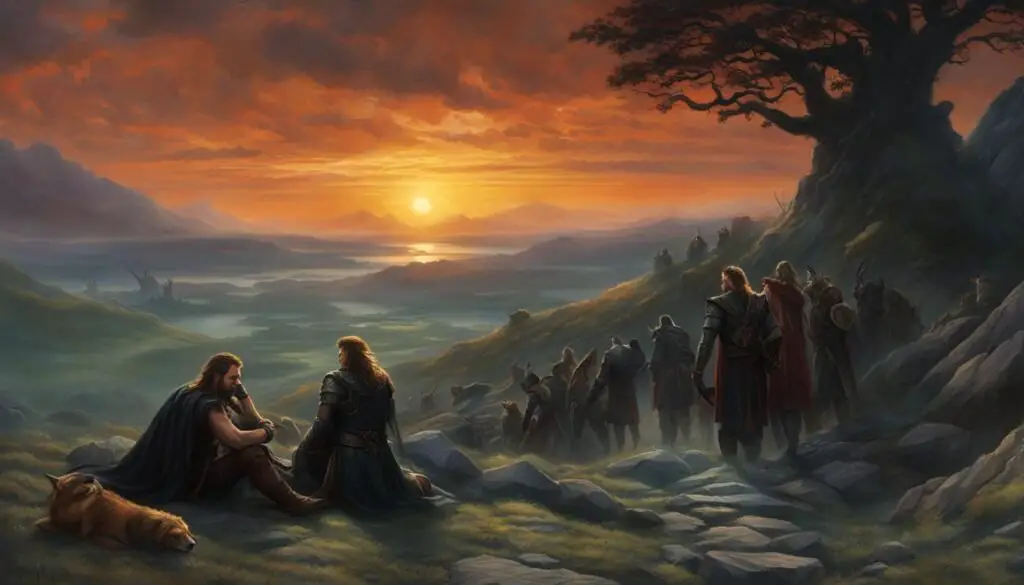
Loki, driven by jealousy and envy, devised a plot to exploit Baldur’s invulnerability. Knowing that mistletoe was the only substance not included in the protective oaths, Loki tricked Hod, Baldur’s blind brother, into launching a mistletoe dart that struck Baldur’s heart, causing his instantaneous death. This tragic event marked the beginning of a series of calamities for the Norse pantheon.
To understand the full extent of Baldur’s tragic end, it is essential to delve into the deceitful actions of Loki. Consumed by his envy towards Baldur’s popularity and invincibility, Loki seized the opportunity to exploit one vulnerability that even the beloved god himself could not escape: mistletoe.
As the gods indulged in their merriments, Baldur’s invincibility was celebrated through futile attempts to harm him. These endeavors only added to the joyous atmosphere, as no harm would befall their cherished deity. However, Loki’s cunning plot would forever shatter the illusion of invulnerability.
Intricately planning his scheme, Loki discovered that Baldur’s mother, Frigg, had made all substances in existence, except mistletoe, swear not to harm her beloved son. Recognizing this loophole, Loki crafted a mischievous plan, targeting Baldur’s blind brother Hod, who had yet to partake in the revelries.
Loki approached Hod, offering guidance to help him participate in the festivities. Presenting him with a mistletoe dart, Loki urged Hod to join the others and launch the dart at Baldur. Oblivious to Loki’s true intentions, Hod unleashed the dart, unknowingly striking his brother’s heart.
The consequences were immediate and irreversible. Baldur fell to the ground, lifeless, as a hushed silence enveloped the gods and goddesses. The tragic end of the beloved god marked a turning point in Norse mythology, unleashing a chain of events that would plunge the pantheon into chaos and turmoil.
The Beginning of Calamity
Following Baldur’s demise, the gods and goddesses mourned the loss of their beloved deity. The once joyous realms were now filled with sorrow and despair. The tragic event set in motion a series of calamities that would test the endurance and strength of the Norse pantheon.
The story of Baldur’s tragic end serves as a reminder of the fragility of life and the unforeseen consequences that can arise from envy and greed. It highlights the vulnerability of even the most powerful and beloved individuals, emphasizing the inexorable nature of fate.
Celebrating Baldur’s Life and Mourning His Death
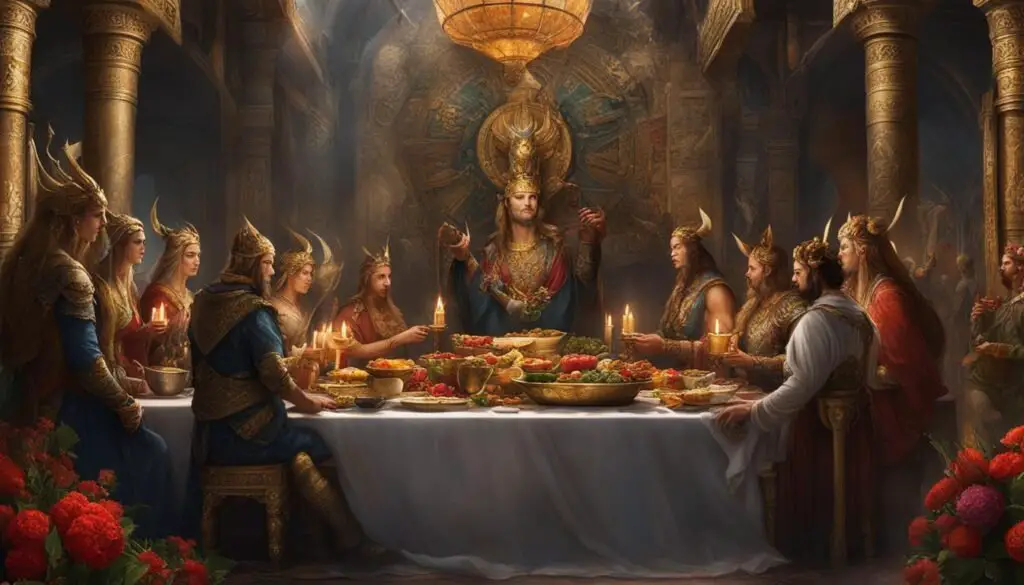
Before his death, Baldur’s invulnerability was celebrated with great joy and amusement among the Norse gods. They were fascinated by the gods’ failed attempts to harm him, which only reinforced their admiration for Baldur’s exceptional powers and beauty.
However, when news of Baldur’s tragic demise reached the gods, grief and lamentation swept through Asgard. The loss of their beloved god cast a shadow of sorrow over the divine realm.
In honor of Baldur, the gods organized a grand funeral pyre. They carefully placed Baldur’s treasures and his devoted wife, Nanna, alongside him, expressing their respect and love for the fallen god. The funeral procession, filled with sorrowful melodies and tearful prayers, became a poignant moment of collective mourning for the Norse gods.
The mourning of Baldur’s death carried profound implications for the gods and their impending fate. It foreshadowed the harbingers of Ragnarok, the catastrophic event that would bring about the end of the world as they knew it.
As the Norse gods celebrated Baldur’s life and mourned his death, they could not foresee the far-reaching consequences and the crucial role Baldur’s tragic fate would play in shaping the future of Norse mythology.
Frigg’s Desperate Attempt to Save Her Son
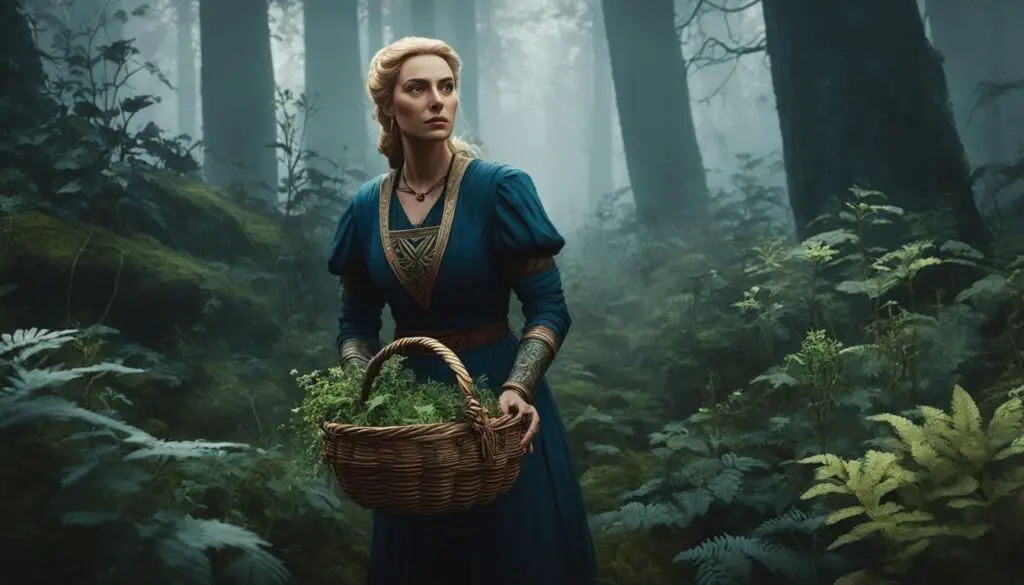
In Norse mythology, Frigg, the mother of Baldur, embarked on a desperate quest to protect her beloved son from his foretold fate. With unwavering determination, she traversed the nine worlds, seeking assurances from every being that they would not harm Baldur.
Driven by a mother’s love, Frigg successfully secured promises from all creatures and objects in existence, except for one seemingly insignificant plant – mistletoe. Unaware of its potential to cause harm, Frigg overlooked mistletoe in her quest to safeguard her son.
This oversight proved to be a tragic mistake. Loki, the cunning trickster god, seized upon this weakness and crafted a deadly weapon from mistletoe. Exploiting Baldur’s invulnerability, Loki manipulated Hod, Baldur’s blind brother, into using the mistletoe dart to fatally wound Baldur, ultimately leading to his untimely demise.
The repercussions of Frigg’s oversight were devastating. Baldur’s death plunged the entire Norse pantheon into mourning and set in motion a series of calamitous events that would forever alter their world.
The Aftermath: Consequences and Resurrection Attempts
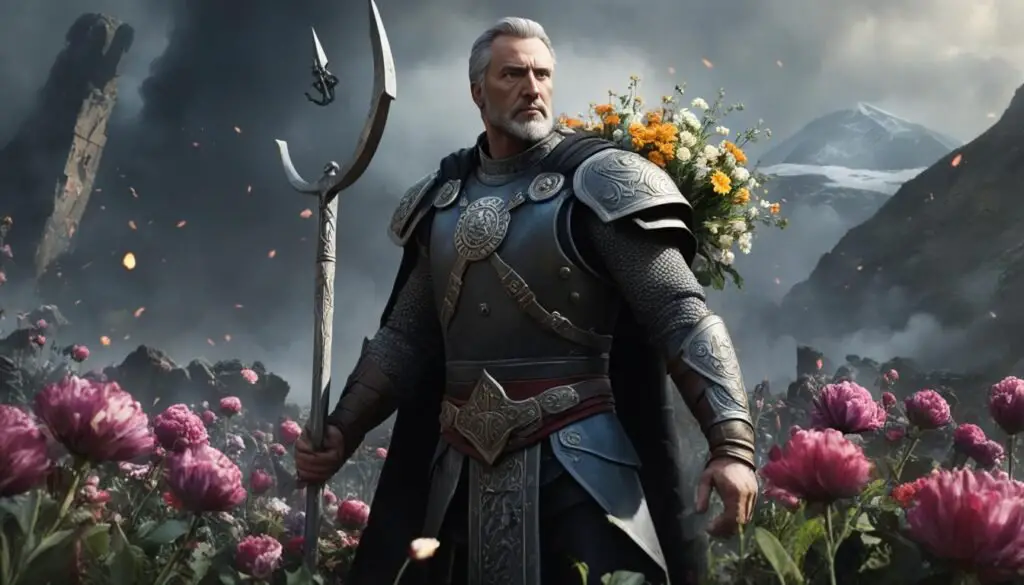
Following Baldur’s tragic demise, the gods found themselves grappling with the profound consequences of their actions. Filled with remorse and desperate to undo the irreversible, they embarked on a journey to resurrect the beloved god.
Their attempts, however, were met with challenges, primarily due to the interference of the cunning trickster god, Loki. Despite their best efforts, the gods were unable to bring Baldur back from the clutches of death.
The goddess of death, Hel, offered a glimmer of hope for Baldur’s return. She proposed that if every creature shed tears of grief for Baldur, he would be granted a second chance at life. This gesture of collective mourning would have the power to reverse the tragic fate that befell him.
However, Loki, always the master of deception, took advantage of the situation. Disguised as the giantess Thok, he callously refused to shed a single tear, thereby thwarting the gods’ hopes for Baldur’s resurrection.
The aftermath of Baldur’s death and the failure of the resurrection attempts left the gods and the entire Norse pantheon in a state of profound sorrow and uncertainty. The consequences of their actions reverberated throughout the realms, setting the stage for the forthcoming events that would lead to Ragnarok, the apocalyptic battle.
The Legacy of Baldur’s Tragic Fate
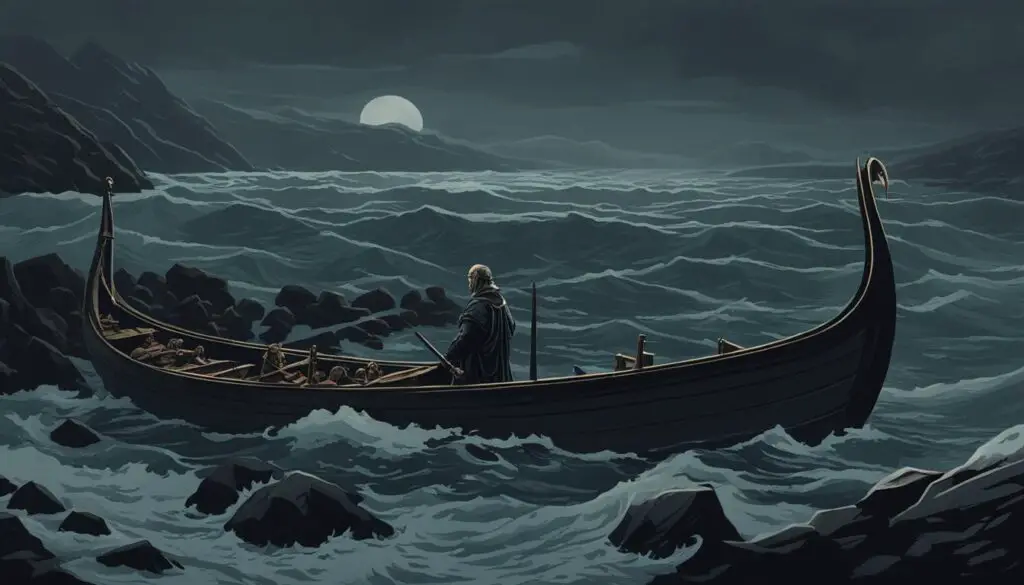
Baldur’s tragic fate left an indelible mark on Norse mythology and extended beyond its boundaries. His demise became a cautionary tale, reminding us of the perils of unbridled ambition and the inevitable workings of destiny. Even today, the story of Baldur continues to resonate in various cultural and literary works, inspiring artists and writers to delve into themes of vulnerability, mortality, and the delicate nature of life itself.
Throughout history, Baldur’s tragic fate has permeated numerous artistic mediums, from paintings to sculptures, poetry, and novels. Artists have sought to capture the essence of his story, portraying the loss and the consequences of unchecked envy. His demise serves as a powerful reminder of the ephemeral nature of life, urging us to cherish every moment and appreciate the beauty that surrounds us.
In literature, Baldur’s tale has sparked countless interpretations and retellings. Authors have explored the depths of his character, shedding light on his virtues, flaws, and the circumstances that led to his untimely demise. Through these narratives, readers are invited to ponder the fragility of existence and grapple with the profound questions surrounding mortality and our own mortality.
The legacy of Baldur’s tragic fate reaches far beyond the realms of Norse mythology. It has transcended time and cultures, serving as a universal symbol of the human experience. Whether hailed as a beloved hero or mourned as a fallen deity, Baldur continues to captivate audiences and ignite introspection, reminding us to embrace our vulnerabilities and cherish the precious gift of life.
Conclusion
Baldur’s demise in Norse mythology serves as a powerful testament to the fragility of existence and the far-reaching consequences of envy-driven actions. This tragic tale encompasses the beauty, invulnerability, and untimely death of a beloved god, capturing the essence of Norse mythological lore.
Norse mythology, with its vibrant cast of divine figures, showcases the triumphs and tragedies that shape the human experience. Through the story of Baldur, we gain valuable insights into the complexities of life and the inevitability of fate.
The legacy of Baldur’s tragic fate continues to reverberate through cultural and literary works, inspiring artists and writers to explore themes of vulnerability, mortality, and the profound fragility of life. As we delve into the depths of Norse mythology, we are reminded of the lasting impact and timeless lessons embedded within these ancient tales.
FAQ
How did Baldur die in Norse mythology?
Baldur was killed by a mistletoe dart thrown by his blind brother Hod, under the influence of Loki’s trickery.
Who were the key figures in Norse mythology?
The key figures in Norse mythology include Odin, the chief of the gods; Thor, the god of thunder; Loki, the mischievous trickster god; and Freyja, the goddess of love, fertility, and magic.
Why was Baldur known for his beauty and invulnerability?
Baldur was renowned for his beauty because he was considered the most handsome of all the gods. His invulnerability stemmed from his mother Frigg’s protective oaths, which rendered him impervious to harm.
How did Loki cause Baldur’s demise?
Loki exploited Baldur’s vulnerability to mistletoe, tricking Hod into launching a mistletoe dart that struck Baldur’s heart and caused his death.
What was the aftermath of Baldur’s death?
The gods mourned Baldur’s death and organized a grand funeral pyre, placing his treasures and his wife, Nanna, alongside him. Baldur’s death had far-reaching consequences and foreshadowed the impending doom of Ragnarok.
What did Frigg do to save Baldur from his fate?
Frigg sought assurances from all beings not to harm Baldur, but she overlooked mistletoe, deeming it insignificant. This oversight led to Baldur’s tragic death.
Did the gods attempt to resurrect Baldur?
Yes, the gods tried to resurrect Baldur, but Loki’s interference prevented their success. Hel, the goddess of death, offered a chance for Baldur’s return if all creatures shed tears of grief for him, but Loki, disguised as Thok, refused to weep.
What is the legacy of Baldur’s tragic fate?
Baldur’s demise serves as a cautionary tale about unchecked ambition and the inevitability of fate. It continues to inspire artists and writers, exploring themes of vulnerability, mortality, and the fragility of life.


